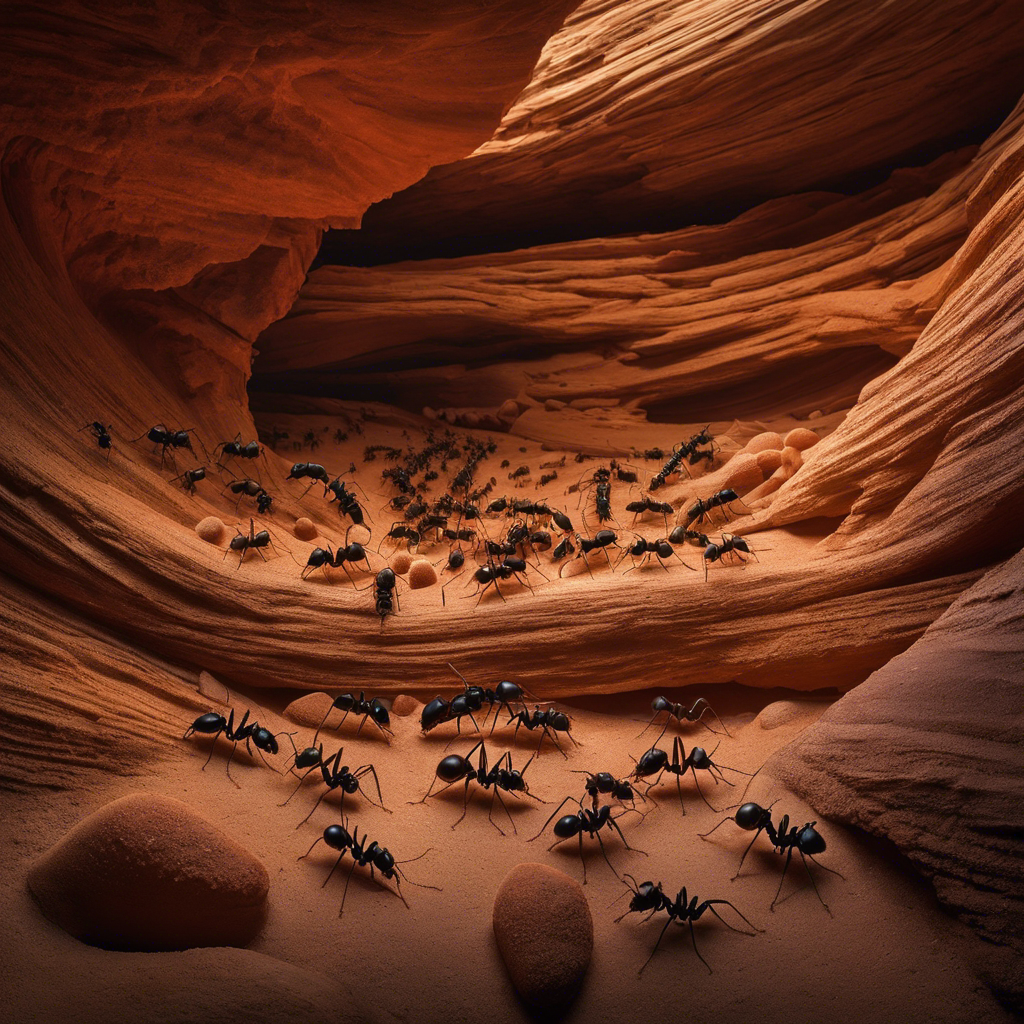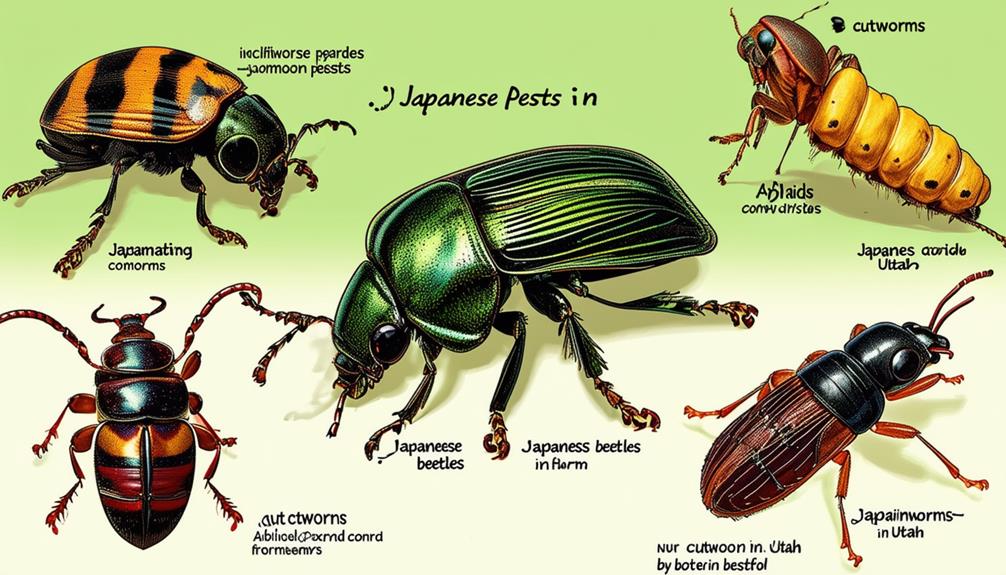Have you ever wondered why ants seem to be everywhere in Utah during the summer months? Or maybe you’re curious about the different types of ants that can be found in the state and how to effectively control them.
In this discussion, we will address frequently asked questions about ants in Utah and provide answers to help you better understand their behavior and how to deal with infestations.
From identifying different ant species to exploring prevention methods and control strategies, we’ll cover a range of topics that will leave you equipped with the knowledge you need to combat these persistent pests.
So, let’s dive in and discover the world of ants in Utah!
Key Takeaways
- Carpenter ants in Utah can cause damage to wooden structures and should be prevented or eliminated.
- Harvester ants primarily feed on dead insects and seeds and are not common home invaders.
- Controlling ant infestations can be achieved by eliminating their food supply, cleaning surfaces, and using sticky traps.
- Ants such as pavement ants and harvester ants can be found in Salt Lake City and have specific control methods to consider.
Ant Identification: Different Species in Utah
When identifying different ant species in Utah, it’s important to note that they have distinct food preferences and habitats. Understanding these factors can aid in effective ant control.
In Utah, there are several common types of ants that you may encounter. One such species is the carpenter ant, which is the largest type of ant in Utah. These ants are typically black, brown, or red in color and they build their nests in decaying, damp wood, leaving sawdust near their nests.
Another species to be aware of is the harvester ant, which builds ground nests with intricate tunnel systems. These ants primarily feed on dead insects and seeds and aren’t frequent home invaders.
Controlling Ant Infestations: Prevention and Elimination
To effectively prevent and eliminate ant infestations, it is crucial to employ precise and scientific methods of control. Ants have distinct food preferences, with some attracted to sweets and others to oils and meat products. One effective control method is to eliminate the food supply and wash surfaces to destroy the odor trails that ants lay down to guide others to food sources. This prevents ants from returning to the nest and stimulates the queen to produce more workers. Sticky traps can also be useful in catching and controlling ants, especially when combined with other control methods. Regularly cleaning and removing food debris, storing food in tightly sealed containers, sealing cracks and gaps, and seeking professional pest control services for severe infestations are essential for ant control.
| Methods of Ant Control | Description | Benefits |
|---|---|---|
| Eliminate Food Supply | Remove all sources of food to discourage ants from entering your home. | Prevents ants from returning and stimulates the queen to produce fewer workers. |
| Destroy Odor Trails | Clean surfaces and use odor-neutralizing products to eliminate the scent trails that ants follow. | Disrupts communication and prevents ants from finding their way back. |
| Use Sticky Traps | Place traps in areas where ants are commonly seen to catch and control them. | Captures ants and helps to reduce their population. |
Winter Ant Problems in Salt Lake City
During the winter months in Salt Lake City, homeowners may encounter a variety of ant problems that require professional pest control inspection and intervention. Here are four important facts to help you understand and address winter ant problems in your home:
-
Carpenter ants live in wooden structures and can cause significant damage. They excavate galleries and weaken the structure over time. Professional pest control is crucial to assess and eliminate these ants effectively.
-
Ants are entering your home through entry points. Sealing cracks and gaps in windows and doors will help prevent their entry and reduce the chances of infestation.
-
Pavement ants are common in Salt Lake City and can contaminate food sources. Keeping your kitchen clean and securing trash can help control these ants.
-
Harvester ants tend to create large mounds in lawns and gardens. Regular maintenance and harvesting of your garden yield can discourage these ants from establishing colonies.
Dangers of Having Ants in the House
Having ants in the house can pose potential dangers, especially if they’re carpenter or pavement ants that can cause damage to wooden structures and contaminate food sources. These pests are commonly found both outside and inside your home.
Carpenter ants, in particular, are known for their ability to excavate wood, potentially weakening the structure of your house. Contaminated food can lead to health risks, as ants can carry bacteria and pathogens.
Aside from structural and health concerns, fire ants can also present a danger due to their ability to sting, causing itchy and painful red marks. Moreover, their stings can damage electrical equipment, posing a fire hazard.
To effectively address the dangers of having ants in the house, it’s advisable to seek professional pest control services to assess the severity of infestation and implement appropriate elimination methods. Prevention measures, such as sealing entry points, maintaining a clean kitchen, and eliminating standing water, can help prevent ant infestations.
Common Ants in Utah: Facts and Control Methods
Carpenter ants, field ants, harvester ants, pavement ants, and pharaoh ants are some of the common ant species found in Utah.
Here are some facts and control methods for dealing with these ants:
-
Different ant species have specific food preferences. Some ants are attracted to sweets, oils, and meat products, while others prefer damp areas or soil outside of homes.
-
Ants lay down odor trails to guide others to food sources. To control ants, it’s important to control the food supply, wash surfaces, and seal entry points.
-
Eliminating the food supply disrupts ant communication and ability to find food. Sticky traps can also be used to catch and control ants.
-
Carpenter ants are the largest ants in Utah and live in damp wood. Field ants create small ant hills outdoors, while harvester ants build ground nests and eat dead insects and seeds. Pavement ants are common house pests attracted to greasy, sweet, and starchy foods. Pharaoh ants are small, reddish-yellow ants commonly found inside homes in Utah.
Knowing the habits and preferences of these ants will help you effectively control them and prevent future infestations.
Frequently Asked Questions
What Is the Most Common Ant in Utah?
The most common ant in Utah is the carpenter ant. They prefer nesting in decaying wood and are often black or red in color, reaching up to 1 inch long.
How Do I Get Rid of Ants in Utah?
To get rid of ants in Utah, use natural repellents indoors, try effective ant control methods, use the best baits for outdoor use, prevent infestations, consider hiring professionals, understand ant colonies, and implement long-term solutions.
What Are the Red Flying Ants in Utah?
Red flying ants in Utah are reproductive ants called alates. They don’t bite or sting. They play a vital role in ant colonies’ life cycles. To prevent infestations, identify them by their red color and wings. They are not harmful to humans or property.
What Is the Crazy Ant Behavior?
Crazy ant behavior is characterized by unique communication, unusual nesting habits, surprising feeding patterns, bizarre reproductive strategies, strange social structures, quirky defense mechanisms, and peculiar foraging behavior. It’s fascinating to observe these quirks in ants.




